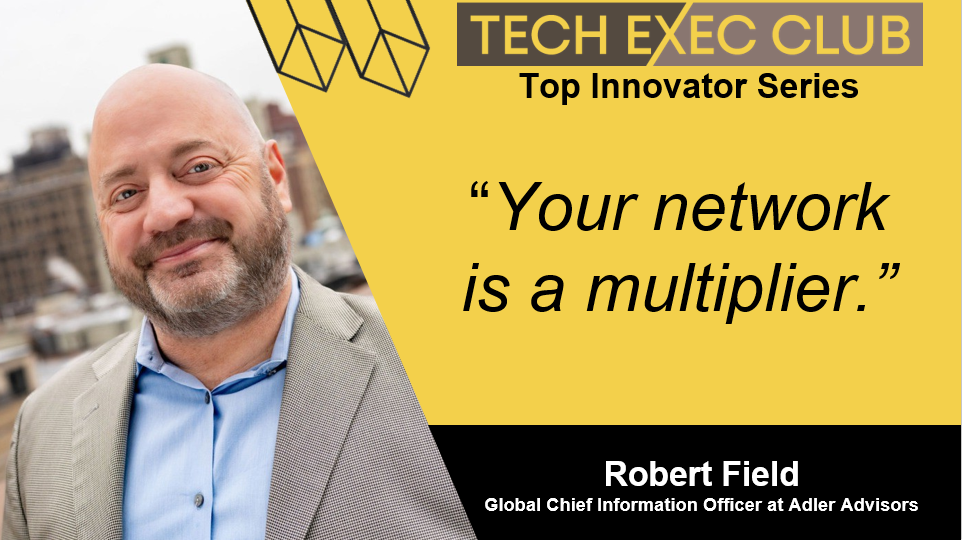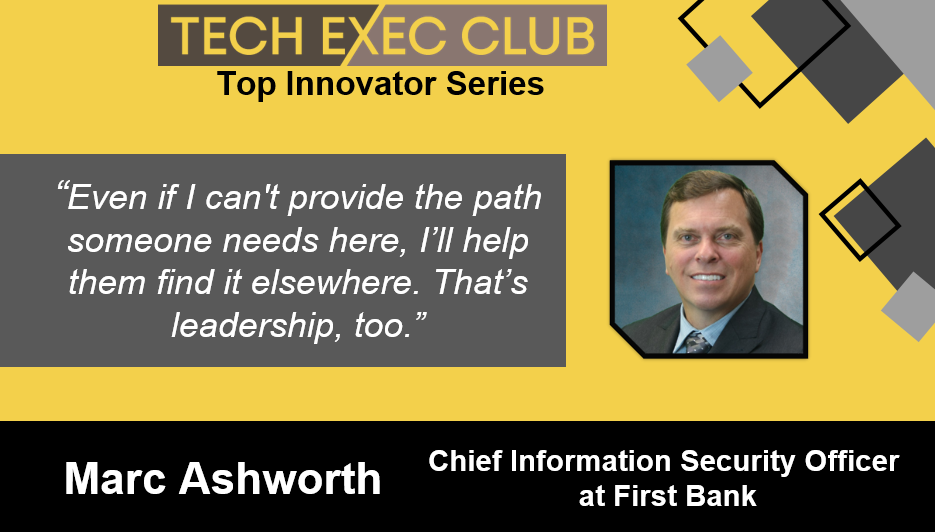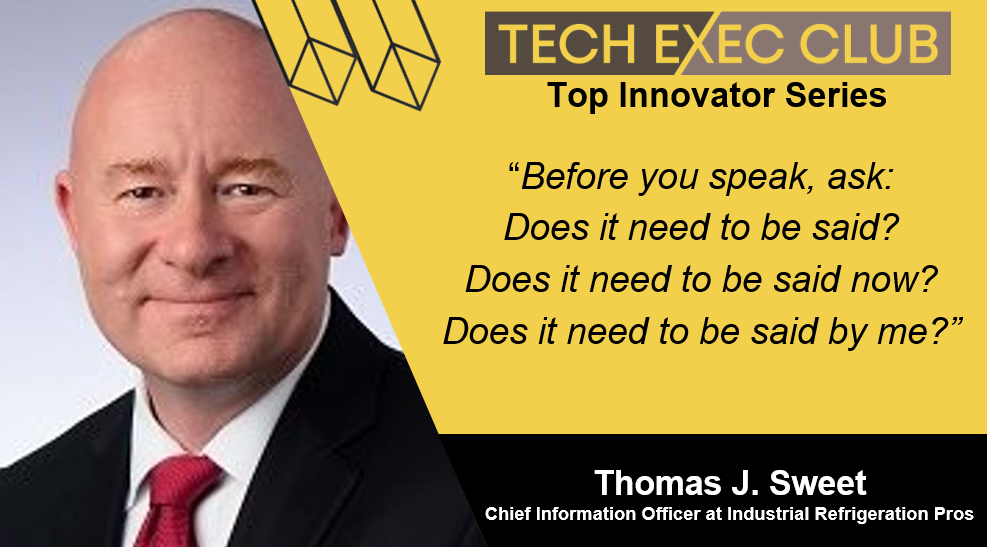When you first meet Robert Field, Global CIO of Adler Advisors, you might expect a conversation about cloud architecture, AI pipelines, or cybersecurity frameworks. But spend just a few minutes with him, and you’ll quickly realize that his definition of innovation goes far beyond technology.
Robert is not your typical CIO. He’s a transformational leader who believes that success in tech leadership isn’t about knowing the next big thing in AI—it’s about understanding your people. In a world that often idolizes systems over stories and platforms over people, Robert has taken a radically human approach to innovation, reshaping what it means to lead in today’s digital landscape.
In this exclusive interview, we explore Robert’s unconventional journey—from the humility gained in a hospital boardroom to the powerful lessons learned by global CEOs. He shares his leadership evolution, passion for relationships, and bold view on why the CIO title doesn’t earn you a seat at the table—value does.
The Evolution of a Tech Leader: From Systems to Relationships
Robert Field didn’t become a people-first leader overnight. Like many technologists, he began his career deeply immersed in the technical—driven by systems, infrastructure, and the latest innovations. But a jarring, deeply human moment reshaped his thinking.
Early in his career, Robert was meeting with a hospital partner who arrived late. Irritated, he felt his time was being disrespected—until he discovered that the man had just come from emergency surgery on a newborn. “Nothing I had to say in that meeting was more important than saving that child’s life,” Robert recalls. “That changed everything for me.”
From that moment forward, Robert began shifting his focus. He realized technology is only as powerful as the relationships driving its adoption. He asked, “How can I help?” rather than “What system should we build?” Over time, this shift transformed his leadership style and his ability to influence organizations at scale.
As CIO, Robert now leads by empowering teams, building trust, and ensuring every voice is heard. “People will never remember what you did for them,” he says. “They’ll remember how you made them feel.” For Robert, innovation starts with empathy.
Earning Your Seat: Redefining the Role of the CIO
If you think the “CIO” title automatically earns you a place in executive decision-making, think again. Robert Field learned this the hard way.
“There was a time I thought the title gave me the right to sit at the table,” he admits. “But when the conversation shifted to revenue, cost-saving, or strategy, and I was still talking about systems—I quickly realized I hadn’t earned my seat.”
What followed was a complete redefinition of his role. For Robert, being a CIO isn’t about delivering IT. It’s about delivering business value through technology. “Technology alone is a commodity,” he says. “Real transformation happens when CIOs understand the business deeply and can drive growth, not just uptime.”
Robert defines digital transformation as “business transformation using technology as an enabler.” This subtle but profound shift has helped him position IT not as a support function but as a core strategic partner. His advice to fellow CIOs? Don’t wait to be invited to the table. Build your own.
Moments That Shape a Leader
Behind every great leader are the moments that change them. For Robert, those moments are more than just memories—they’re milemarkers in a leadership journey rooted in vulnerability, humility, and growth.
One such moment was his first dinner with Craig Cuyar, is the Global GIO of Omnicom. “He told me, ‘My job is to deliver business—not IT,'” Robert recalls. That perspective flipped his world upside down. It wasn’t just about systems but solving real problems that impacted revenue, clients, and people.
Then there was Kevin Field—no relation—who taught him that CIOs must earn their voice at the table. “If your voice isn’t being heard,” Kevin said, “build your table.”
Robert credits his growth to mentors like Craig, Kevin, and the many men and women who took the time to guide, challenge, and believe in him along the way. But more than that, he recognizes that his ability to learn from others—and to see beyond his perspective—has been the real accelerator of his success.
Even now, Robert stays rooted in these stories. “That meeting with the physician’s assistant? I still feel the emotion of that moment,” he says. “Walking in someone else’s shoes is a daily reminder.”
The Power of Cross-Industry Experience and Lifelong Learning
Robert’s career reads like a Jeopardy board—finance, manufacturing, education, and healthcare—and that’s precisely how he likes it.
Having worked across multiple industries, Robert brings a rare breadth of perspective to the CIO role. He believes that true innovation happens at the intersection of different experiences, not in the echo chamber of a single industry. “Companies often hire for experience in their current industry,” he says. “But sometimes, the best insights come from outside it.”
He embraces the concept of reinvention—both personal and professional. Inspired by thinkers like Deepak Chopra, Robert talks about the constant regeneration of the body as a metaphor for leadership growth. “If I already know who I’ll be in two years,” he says, “then I’m probably not open to what I need to become.”
Whether taking business courses, leadership seminars, or simply listening to his peers, Robert is a relentless learner. His curiosity and humility keep him growing and relevant in a fast-changing world.
Networks Over Titles: Building Meaningful Relationships in Tech Leadership
For Robert, technology hasn’t been the most potent force in his career. It’s been his network.
“Your network is more important than any title you hold,” he says. And he means it. From former colleagues to lifelong mentors, Robert’s relationships have opened doors and sustained him through every twist in his journey.
He’s passionate about giving back to that network—listening, collaborating, and showing up for people before they need to show up for him. “Don’t call someone only when you’re looking for a job,” he advises. “Stay connected. Invest in them.”
Robert’s philosophy is deeply rooted in reciprocity. He believes that a leader’s job is not to go it alone but to build a village of peers, mentors, and partners who elevate each other.
“I’m lucky to have a network that answers when I call,” he says. “Which is why I only call when it matters.”
Robert’s journey is a compelling reminder that leadership is not static. It’s forged through humility, reinvention, and a relentless commitment to elevating those around us. Now, it’s your turn to act on these insights. Here’s how you can begin:
1. Lead with Empathy, Not Ego: Take a step back from your title, systems, and roadmaps. Instead, ask: What does my team need today? As Robert learned during a defining moment in a hospital boardroom, our work is never more important than the lives we touch. Start each interaction with “How can I help?” and mean it. Make empathy the foundation of your leadership.
2. Deliver Business Value, Not Just IT: The CIO’s seat at the executive table is not a right—it’s earned through results that matter to the business. Technology is the means, not the mission. Reframe every IT initiative around a business outcome: revenue, growth, customer satisfaction, and cost savings. Speak the language of the boardroom.
3. Redefine Digital Transformation: Robert describes digital transformation as “business transformation using technology as an enabler.” This nuanced distinction is critical: tech without purpose is just noise. Make every digital initiative people-centered. Measure success not in features delivered but in value created for the end user and the business.
4. Build and Nurture Strategic Relationships: Whether it’s internal partners, customers, or your professional network, relationships are the currency of sustainable leadership. Robert’s network has been his greatest asset across roles and industries. Don’t just connect—engage. Schedule intentional time to check in with key relationships, not when you need something, but when they do.
5. Cultivate Cross-Industry Curiosity: Robert’s diverse background—from healthcare to finance—fuels his ability to connect the dots others miss. Innovation happens at the edges, where perspectives collide. Explore industries beyond your own. Attend events, listen to peers outside your vertical, and borrow insights that can be reimagined for your context.
6. Foster a Culture of Continuous Reinvention: Leadership is evolution. Robert likens personal growth to the regeneration of cells—every day is an opportunity to become someone new. Build time into your schedule for reflection, learning, and reinvention. Encourage your team to do the same. Ask: What did we learn this month that made us better than last?
7. Empower Over Control: Leadership isn’t about having all the answers. It’s about enabling others to thrive. Robert built high-performing teams by trusting his experts and focusing on outcomes, not oversight. Delegate boldly. Give ownership, not just tasks. Measure leaders by how well they enable others, not how much they control.
8. Stay Grounded in Humanity: Robert’s core belief is that people will forget what you did but never forget how you made them feel. In high-stakes environments, this emotional intelligence defines the most enduring leaders. Build trust before processes. Take time to know the story behind the colleague, the context behind the pushback, and the person behind the performance.
9. Build Your Table if Necessary: If the organization doesn’t see your value, show them. Don’t wait for permission to lead—demonstrate impact, gather allies, and influence through delivery. Launch your own.
In an era of accelerating change and digital complexity, Robert Field is a leader who brings humanity back into technology. As Global CIO of Adler Advisors, he doesn’t just oversee systems—he cultivates cultures, empowers people, and drives transformation through trust and relationships.
His leadership isn’t built on flashy tech trends or hierarchical power but on listening, learning, and lifting others. From deeply personal stories to decades of cross-industry experience, Robert reminds us that the most effective technology leaders understand that people—not platforms—drive progress.
He’s more than a CIO. He’s a connector, a mentor, a strategist—and, above all, a champion of purpose-driven leadership. As he continues evolving and redefining what it means to lead in tech, Robert’s journey offers a playbook for any executive looking to make a lasting impact. Let his example be a call not just to innovate—but to innovate with heart.
Want to hear Robert Field’s insights firsthand? Watch the full, live podcast interview [click here]





